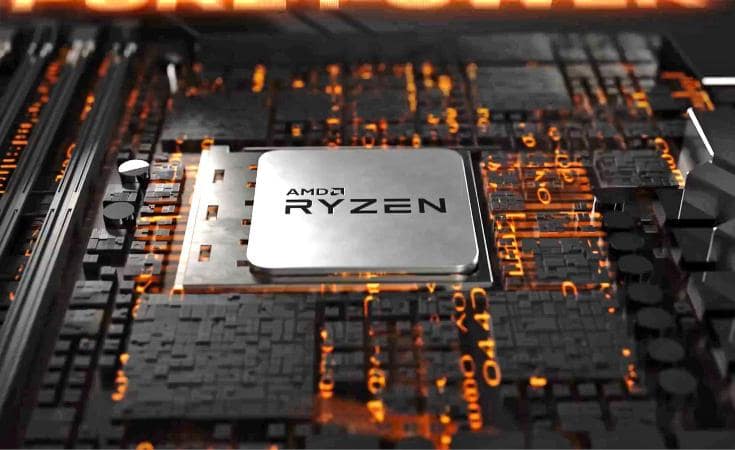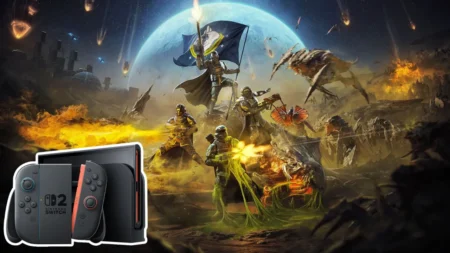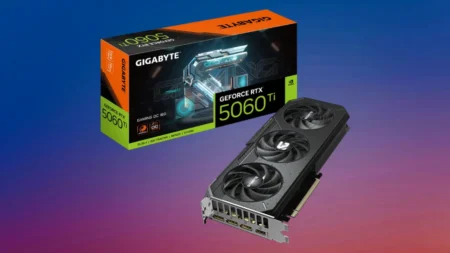The mid-range AMD B550 motherboard has many cheap and expensive options. The price of these is very similar to X570 motherboards. Choosing the right AMD motherboard for a new gaming or business system is even more confusing. So, this article tells all the difference between AMD B550 Vs X570 motherboards discussing which one wins in which specific area. Our guide will help you pick the right motherboard to go with your Ryzen 3000 or 5000 processors.
AMD Ryzen 5000 family processors are supported by both of these motherboards. These boards are the successor of X470 and B450 in their respective generational shifts. Both of them have PCIe4.0, so they are the best AMD motherboards available. If you’re still unsure about B550 Vs X570, which mobo is the right pick for you, we’ll go through the pros and cons of both and give you some details to help you decide.
B550 Chipset: A Quick Look
Compared to the X570 Chipset, it is generally much cheaper and the successor of the AMD B450. The B550 chipset is the top competitor of the X570 featuring boards because of its price tag. The motherboards with the B550 chip cost much similar or a bit more than those containing AMD X570. It’s primarily focused on working with the Ryzen 5000 lineup processors. Because it uses the AM4 socket, it’s good to go with Zen 2 Ryzen 3000/4000 CPUs. PCIe 3.0 x 4 lanes connect the B550 chipset to the processor; no PCIe 4.0 lanes are available.
The B550 chipset motherboards are geared toward serious gamers and professionals who use photo and video editing software which is usually heavy. As long as you don’t mind paying more for the extra PCIe 4.0 lanes, you’ll be OK with the B550. Mainly, the B550 chipset will work with AMD Ryzen 5000 processors built on the Zen 3 architecture and compatible with the Ryzen 3000 range CPUs. The B550 can consume up to 6W at its utmost. If the cooling fans are also on your priority list, you may be disappointed with the B550 mobos and want to go with the X570 model.
Specifications
| Direct CPU PCIe Support for GPU | x16 PCIe 4.0 |
| Direct CPU PCIe Configuration | 1 x16 or 2 x8 |
| CPU to Chipset Downlink | x4 PCIe 3.0 |
| General Purpose PCIe Lanes from Chipset | PCIe 3.0 |
| No. of PCIe 4.0 Lanes from Chipset | 0 |
| No. of PCIe 3.0 Lanes from Chipset | 10 |
| Chipset SuperSpeed USB 10Gbps Ports (USB 3.2 Gen 2×1) | 2 |
| Chipset SuperSpeed USB 5Gbps Ports (USB 3.2 Gen 1×1) | 2 |
| Chipset HiSpeed USB 480Mbps Ports (USB 2.0) | 6 |
| Max Possible Chipset I/O | 10 PCIe 3.0, 6 SATA III (6Gbps), 10 USB (2x10Gbps, 2x5Gbps, and 6x480Mbps) |
| Overclocking Support | Yes |
| Dual Graphics Card Support | Yes |
| CPU Support | AMD Ryzen 3000 and 5000 |
X570 Chipset: An Introduction
When released in July 2019, the X570 succeeded the previous X470 gen’s chipset and included compatibility with the Ryzen 5000 range processors. This chip supports PCI Express 4.0 GPUs and NVMe drives for the first time. The X570 is an excellent choice with PCIe 4.0 support. A more stable overclocking experience is also possible with Ryzen 7/9 processors, thanks to improved voltage regulator modules (VRMs). Dual PCIe 4.0 M.2 ports are available on some X570 motherboards. Nevertheless, many consumers won’t benefit from this functionality as the price of PCIe Gen4 SSDs is high.
For professional gamers, photographers, and video editors, the X570 board is an excellent mobo choice. The X570’s built purpose is to work with AM4 processors. You can keep using it as long as you have a Ryzen CPU from the preceding version. Just Ryzen 2000 family processors are eligible for this; it does not apply to 1st generation Ryzen chipsets lineup. A modest onboard chipset fan is standard on nearly all X570 motherboards. In contrast, the lower power usage and heat dissipation of B550 motherboards negate the need for a cooling fan.
Specifications
| Direct CPU PCIe Support for GPU | x16 PCIe 4.0 |
| Direct CPU PCIe Configuration | 1 x16 or 2 x8 |
| CPU to Chipset Downlink | x4 PCIe 4.0 |
| General Purpose PCIe Lanes from Chipset | PCIe 4.0 |
| No. of PCIe 4.0 Lanes from Chipset | 16 |
| No. of PCIe 3.0 Lanes from Chipset | 0 |
| Chipset SuperSpeed USB 10Gbps Ports (USB 3.2 Gen 2×1) | 8 |
| Chipset SuperSpeed USB 5Gbps Ports (USB 3.2 Gen 1×1) | 0 |
| Chipset HiSpeed USB 480Mbps Ports (USB 2.0) | 4 |
| Max Possible Chipset I/O | 16 PCIe 4.0, 12 SATA III (6Gbps), 12 USB (8x10Gbps and 4x480Mbps) |
| Overclocking Support | Yes |
| Dual Graphics Card Support | Yes |
| CPU Support | AMD Ryzen 2000, 3000 and 5000 |
AMD B550 Vs X570 Chipsets: Comparison
| Chipset | B550 | X570 |
| Direct CPU PCIe Configuration | 1 x16 or 2 x8 | 1 x16 or 2 x8 |
| PCIe GPU Support | x16 PCIe 4.0 | x16 PCIe 4.0 |
| CPU to Chipset Downlink | x4 PCIe 3.0 | x4 PCIe 4.0 |
| General Purpose PCIe Lanes from Chipset | PCIe 3.0 | PCIe 4.0 |
| PCIe 3.0 Lanes from Chipset | 10 | 0 |
| PCIe 4.0 Lanes from Chipset | 0 | 16 |
| Chipset SuperSpeed USB 5Gbps Ports (USB 3.2 Gen 1×1) | 2 | 0 |
| Chipset SuperSpeed USB 10Gbps Ports (USB 3.2 Gen 2×1) | 2 | 8 |
| Chipset HiSpeed USB 480Mbps Ports (USB 2.0) | 6 | 4 |
| Overclocking Support | Yes | Yes |
| Dual Graphics Card Support | Yes | Yes |
| Max Possible Chipset I/O | 10 PCIe 3.0, 6 SATA III (6 Gbps), 10 USB (2 x 10 Gbps, 2 x 5 Gbps and 6 x 480 Mbps) | 16 PCIe 4.0, 12 SATA III (6 Gbps), 12 USB (8 x 10 Gbps and 4 x 480 Mbps) |
| CPU Support | Zen 3 Ryzen Processors 3rd Gen Ryzen Processors 3rd Gen Ryzen Processors with Integrated Graphics |
Zen 3 Ryzen Processors 3rd Gen Ryzen Processors 3rd Gen Ryzen Processors with Integrated Graphics 2nd Gen Ryzen Processors 1st Gen Ryzen Processors (Only AF models) |
B550 Vs X570: What’s the Difference?
Price
X570 is a bit more expensive than B550 as its PCIe 4.0 lanes require more PCB, stronger VRM, and even a ventilation system. So the B550 is more expensive than the X570 but they have more features that benefit the users in their gaming experience. There are many options available at the same price for performance. But the most important thing to consider is your workload and the hardware you need to keep your CPU running fast and smoothly.
Dual GPU Support
Nvidia’s SLI or AMD’s CrossFire can be used to set up dual GPU. So your mobo and processor must allow these configurations. Interestingly both of these motherboard chipsets can support two graphics cards. But only a few B550 motherboards support dual GPU and the same functionality is enabled on every X570 board. X570 has an edge because many people prioritize functionality. To indulge your whims you can install an additional GPU or PCIe expansion card in that socket too.
B550 Vs X570 Overclocking
An overclocked component increases the operating speed to improve the system’s primary CPU or graphics controller performance. Considering these two boards, it’s important to know that overclocking depends on the system’s VRM. In other words, a higher VRM means greater power and improved performance. The primary benefit of voltage regulation is increased system efficiency and responsiveness due to the VRM’s role in ensuring voltage stability and power efficiency.
For overclocking, both X570 and B550 motherboards are supported. X570 chipsets feature stronger VRMs than B550 models, which makes sense. The best VRMs on any AMD mobo are found on the heavy X570 chipset motherboards which are also the most expensive.
Support for PCIe
As for PCIe lanes, B550 and X570 are very different. X570 connects to the CPU through PCIe 4.0 lanes, while B550 connects to the processor through PCIe 3.0 lanes. Both chipsets have X16 PCIe Gen 4 CPU graphics, PCIe Gen 4 CPU storage, and USB 3.2 Gen 2. They also have dual GPUs, but a feature that’s not used yet. It’s when we look at PCIe Gen 3 lanes that we start to see the differences between B550 and X570. And X570 has PCIe Gen 4 basic lanes and PCIe Gen 4 CPU uplink, which B550 lacks.
Compatibility
Although B550 and X570 share many of the same specs, compatibility is where they differ. As a future-proof motherboard, AMD built B550 to be compatible with Ryzen 3000 family CPUs or beyond. So B550 can’t run earlier Ryzen processors from generations 1 and 2, but the X570 can. Further, current APUs from Ryzen are not supported by B550, which further complicates the situation. But despite being Ryzen 3000, these APUs don’t use Zen 2 architecture. Sad to say, B550 can’t run Zen+ on 3200G or 3400G as well.
USB and SATA Connectivity
Aside from PCIe lanes, USB and SATA are also key options for connectivity. B550 has fewer PCIe 4.0 lanes than X570 so aside from the 8 USB 3.0 10 Gbps ports from the X570’s chipset, B550 falls short in the department. It means many of your PC’s slots can benefit from faster data transfer rates. If you need more storage options, X570’s extra 8 configurable SATA ports are nice but do take note that these will have to be set up by the supplier so make sure to check the number of SATA ports before purchasing.
How Future-Proof is X570 Compared to B550?
Possible to say yes, but no. Both are supposed to support up to the Ryzen 5000 series CPU. So any future high-end CPU may need a new board and require a new AM5 socket. But X570 has stronger PCIe 4.0 support with more PCIe 4.0 slots and lanes than B550. So X570 is more “future proof” than B550 but this isn’t a major factor for most people.
Is X570 Better Than B550 for Overclocking?
A more important factor for midrange to high end CPU overclocking is the voltage regulation module (VRM). Are the VRM on X570 boards better than B550? If you’re not familiar with VRM, they’re the part of the board that regulates temperature. Overclocking especially for super-duper CPU is possible through a board’s VRM. Stronger VRM would be expected on top level X570 than B550. But AMD’s best VRM is on the expensive variant of X570.
There’s a big difference between premium B550 and cheap X570 when it comes to VRM strength. These premium ones are very expensive boards that aren’t considered by most users. You’ll get better VRM for around $200 from Aorus Pro or Tomahawk B550 than from an equivalent priced X570 board like X570 Gaming Edge WiFi. Yes, I know this is weird knowing that X570 is marketed as a strong mobo. But since B550 is the new, the stronger VRM makes sense.
For decent VRM, there are more cheap B550 boards than cheap X570. So an affordable X570 isn’t necessarily better than the flagship B550 since the latter has better heat ventilation. In this price range, if you want the extra features of X570 then X570 motherboard is the way to go.
AMD B550 Vs X570: Which One to Buy?
The main difference between B550 and X570 is whether they support PCIe. B550 has only PCIe 3.0 while X570 has all PCIe 4.0 so there is a good margin between them. But both have PCIe 4.0 for GPU and M.2 NVMe SSD directly connected to the CPU. So, the cost is the focus in this case. It’s better to go with B550 since it has a stronger VRM and has overclocking and extra features even if you don’t need PCIe 4.0 lanes. But to get support for these lanes, X570 is the way to go. It can also boost Ryzen 7 and 9 with continuous overclocking thanks to stronger VRM.








